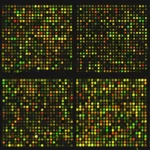
Progress in Single-Cell Multi-Omics Integration
February 21, 2025Introduction
The emergence of single-cell multi-omics integration has revolutionized biological research by allowing scientists to study cellular heterogeneity with unprecedented resolution. Unlike traditional bulk sequencing, which averages molecular signals across millions of cells, single-cell multi-omics captures molecular information from individual cells across multiple layers, including genomics, transcriptomics, epigenomics, proteomics, and metabolomics. This approach provides a holistic view of cellular functions, regulatory networks, and disease mechanisms, making it an essential tool in systems biology and precision medicine.
Advancements in experimental and computational techniques have enabled researchers to simultaneously profile multiple omics layers in the same cell, leading to significant breakthroughs in cancer biology, immunology, neuroscience, and regenerative medicine. This progress is paving the way for new discoveries in cell lineage tracing, cell-state transitions, and the molecular basis of diseases.
Key Omics Layers in Single-Cell Multi-Omics Integration
Genomics
- Single-cell whole-genome sequencing (scWGS) reveals mutations, copy number variations (CNVs), and chromosomal alterations at the individual cell level.
- Essential for studying genetic diversity in cancer, developmental biology, and somatic mutations.
Transcriptomics
- Single-cell RNA sequencing (scRNA-seq) enables high-resolution profiling of gene expression dynamics in individual cells.
- Provides insights into cell differentiation, immune responses, and disease progression.
Epigenomics
- Techniques such as single-cell ATAC-seq (scATAC-seq) and single-cell DNA methylation sequencing uncover chromatin accessibility, histone modifications, and epigenetic regulation.
- Crucial for understanding gene regulation, cellular memory, and developmental plasticity.
Proteomics
- Single-cell mass spectrometry and single-cell cyclic immunofluorescence (CyTOF) allow quantification of protein expression and post-translational modifications.
- Helps in studying signaling pathways, immune cell activation, and disease biomarkers.
Metabolomics
- Single-cell metabolomics techniques such as mass spectrometry imaging (MSI) and Raman spectroscopy provide a window into cellular metabolism and metabolic heterogeneity.
- Essential for cancer metabolism studies, drug response profiling, and metabolic reprogramming.
Technological Advances in Single-Cell Multi-Omics Integration
1. Experimental Innovations
- Droplet Microfluidics: Enables high-throughput single-cell analysis, capturing thousands of individual cells while maintaining molecular integrity.
- Combinatorial Indexing: Allows simultaneous profiling of multiple omics layers in the same cell without physically isolating individual cells.
- Spatial Multi-Omics: Emerging technologies such as Spatial Transcriptomics and MERFISH (Multiplexed Error-Robust Fluorescence In Situ Hybridization) allow spatially resolved single-cell multi-omics profiling within tissue contexts.
2. Computational Integration Methods
- Deep Learning & Machine Learning: AI-driven methods enhance the integration of single-cell omics data by removing batch effects, imputing missing values, and clustering cell types.
- Multi-Omics Factor Analysis (MOFA): A powerful tool for identifying shared and unique biological signals across different omics layers.
- Single-Cell Variational Inference (scVI): Uses probabilistic models to infer cellular states from integrated multi-omics datasets.
- Graph-Based Network Models: Help in reconstructing gene regulatory networks and signaling pathways from integrated single-cell data.
Applications of Single-Cell Multi-Omics Integration
1. Cancer Biology
- Identifies tumor heterogeneity, clonal evolution, and drug resistance mechanisms.
- Helps in mapping tumor microenvironments and immune cell interactions.
- Facilitates the discovery of cancer-specific biomarkers and therapeutic targets.
2. Immunology & Infectious Diseases
- Unravels the complexity of the immune response at the single-cell level.
- Identifies novel immune cell subtypes and their functional states.
- Advances the development of personalized immunotherapies and vaccines.
3. Neuroscience
- Provides insights into neuronal diversity, synaptic plasticity, and neurodegenerative diseases.
- Helps in understanding disorders like Alzheimer’s, Parkinson’s, and schizophrenia.
4. Regenerative Medicine & Stem Cell Research
- Deciphers stem cell differentiation pathways and lineage commitment.
- Enhances our understanding of tissue regeneration and organ development.
- Aids in the design of next-generation cell therapies.
Challenges in Single-Cell Multi-Omics Integration
Despite significant progress, several challenges remain:
- Data Complexity & High Dimensionality: Integrating multi-omics data from single cells generates large, complex datasets requiring advanced computational tools.
- Noise & Dropout Events: Single-cell omics data suffer from technical noise and missing values, affecting downstream analysis.
- Standardization & Reproducibility: Variability in protocols and platforms creates challenges in reproducing results across studies.
- High Cost & Scalability: Multi-omics experiments are expensive, limiting their widespread application in clinical settings.
Future Directions
AI-Powered Multi-Omics Integration
- Advanced deep learning models will enhance data integration and interpretation.
- AI-driven tools will predict cell fate decisions and disease progression.
Development of More Cost-Effective Technologies
- Innovations in **single-cell barcoding and high
















